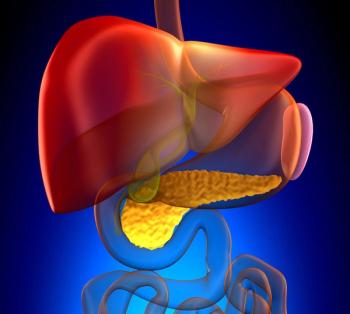
Slide Show: 2013 ASCO Breast Cancer Symposium
This slide show includes some of the highlights from the 2013 ASCO Breast Cancer Symposium, including a study looking at how many women know their breast cancer risk, a study on cardiovascular risk in DCIS patients treated with radiation, and more.
Slide 1: Survey Shows Many Women Get Their Breast Cancer Risk WrongWomen of different ethnic backgrounds tend to either overestimate or underestimate their risk of developing breast cancer by age 90, revealing a major gap in understanding life-time risk of breast cancer for the majority of women. The same study showed that 40% of woman undergoing a mammogram indicated that they have never had a conversation about breast cancer risk with their healthcare provider.Source: Herman JD, Herman SM. Women's understanding of personal breast cancer risk: Does ethnicity matter? 2013 ASCO Breast Cancer Symposium. Abstract 4.Slide 2: No Increased Cardiovascular Risk in DCIS Patients Treated With Radiotherapy Ductal carcinoma in situ (DCIS) patients treated with radiotherapy do not have an increased risk of cardiovascular morbidity or death compared with those treated with surgery alone, according to a study of more than 10,000 women in the Netherlands. In fact, the researchers found that after a median 10-year follow-up, women in the study had a lower risk of cardiovascular mortality when compared with the general population.Source: Boekel NB et al. Cardiovascular morbidity and mortality in patients treated for ductal carcinoma in situ of the breast. 2013 ASCO Breast Cancer Symposium. Abstract 58.Slide 3: Perioperative MRI Does Not Appear to Influence Recurrence of Breast Cancer in DCIS PatientsA retrospective analysis of 2,321 DCIS patients who underwent perioperative MRI showed that the procedure did not reduce the risk of breast cancer recurrence. The study showed no association of locoregional recurrence and perioperative MRI, even when patients did not receive radiation therapy. Whether patients benefit from this type of MRI is still unclear. Additional studies are needed.Source: Pilewskie ML et al. Association of MRI and locoregional recurrence (LRR) rates in ductal carcinoma in situ (DCIS) patients treated with or without radiation therapy (RT). 2013 ASCO Breast Cancer Symposium. Abstract 57.Slide 4: Proof of Principle Study Shows Potential of Shorter Breast MRI Exam for ScreeningAn abridged breast MRI protocol had a 99% negative predictive value in a small, single-center proof of principle trial, demonstrating accuracy of breast cancer detection on par with a full MRI protocol. Mammography is the current preferred screening method and MRI is not used for breast cancer screening due to costs and the time to create and process images, but the authors of this study see MRI as a potentially better imaging modality than mammography for detecting invasive and aggressive tumors.Source: Kuhl CK, Schrading S, Strobel K, Bieling H. Accelerated breast MRI for breast cancer screening. 2013 ASCO Breast Cancer Symposium. Abstract 21.Slide 5: Routine Tumor Genotyping a Win-Win: Feasible, Clinically Beneficial, and Can Hasten Targeted Therapy DevelopmentUsing a high-throughput tumor genotyping assay called Snapshot, researchers at the Massachusetts General Hospital Cancer Center evaluated 347 fixed tumor samples for the presence of 130 oncogenic driver mutations in 15 genes that currently have drug targets. Enrollment in clinical trials quadrupled for those patients who had their tumor genotyped. The authors conclude that tumor genotyping can be incorporate well into clinical practice to boost clinical trial enrollment and to aid in the development of targeted therapies for breast cancer.Source: Bardia A, Juric D, Isakoff SJ, et al. Impact of routine tumor genotyping on enrollment in targeted therapy trials for metastatic breast cancer (MBC): 4-year review. 2013 ASCO Breast Cancer Symposium. Abstract 145.Slide 6: Change in Receptor Status During Neoadjuvant Therapy Could Indicate a Better OutcomeA 398-patient study shows that changes in ER, PR, and HER2 status from the primary tumor to the residual disease after neoadjuvant chemotherapy are frequent. The study found that 40.7% of patients had a change in at least one biomarker, including 35.2% of patients whose tumors went from PR-positive to PR-negative. Patients with any marker change had a statistically significant improvement in 5-year recurrence-free survival (RFS) compared with patients without any receptor change, though no improvement was seen in overall survival (OS). But, a change from ER-positive to ER-negative status was associated with both a better RFS and OS.Source: Parinyanitikul N, Lei X, Chavez-Mac Gregor M, et al. Receptor status change from primary to residual breast cancer after neoadjuvant chemotherapy (NCT) and analysis of survival outcome. 2013 ASCO Breast Cancer Symposium. Abstract 48.
Newsletter
Stay up to date on recent advances in the multidisciplinary approach to cancer.


















































































